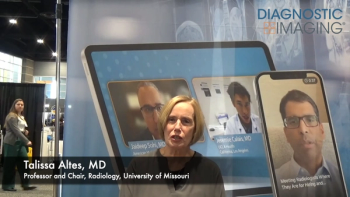
Book Review -- Practical Radiography: Principles and Applications
2005, by Peter Hertrich
Publicis Corporate Publishing; Pound Sterling 49.90; 318 pages.
Practical Radiography includes a wealth of information about every aspect of medical imaging that uses ionizing radiation. The book addresses the fundamental principles of diagnostic physics as well as their clinical implications in a concise fashion. Diagrams, although sometimes small, are clear and well described, and they emphasize Siemens' technological developments in this area. The book was easy to read and followed a simple format.
The first chapter presents a historical overview of x-ray technology. Subsequent chapters begin with a simple introduction and then develop each topic in a logical manner. One chapter is devoted to radiation dose. This is of paramount importance today, given rising levels of exposure from medical use. Other chapters discuss system components and equipment found within the radiology department. Sections on conventional and digital recording media link theory and clinical practice. The final chapter describes patient data management, which is appropriate for any professional dealing with large amounts of data. There is also a useful appendix.
Individual subject content is, at times, a little complex. This, combined with its expansive content, makes the book better suited to radiographers and radiologists as a handy professional reference than a core textbook. Its format, content, and low price recommend it to anyone working within postgraduate or undergraduate medical education.
Linda Clarkson
Postgraduate lecturer, radiography department, University of Bradford, U.K.
Newsletter
Stay at the forefront of radiology with the Diagnostic Imaging newsletter, delivering the latest news, clinical insights, and imaging advancements for today’s radiologists.




























